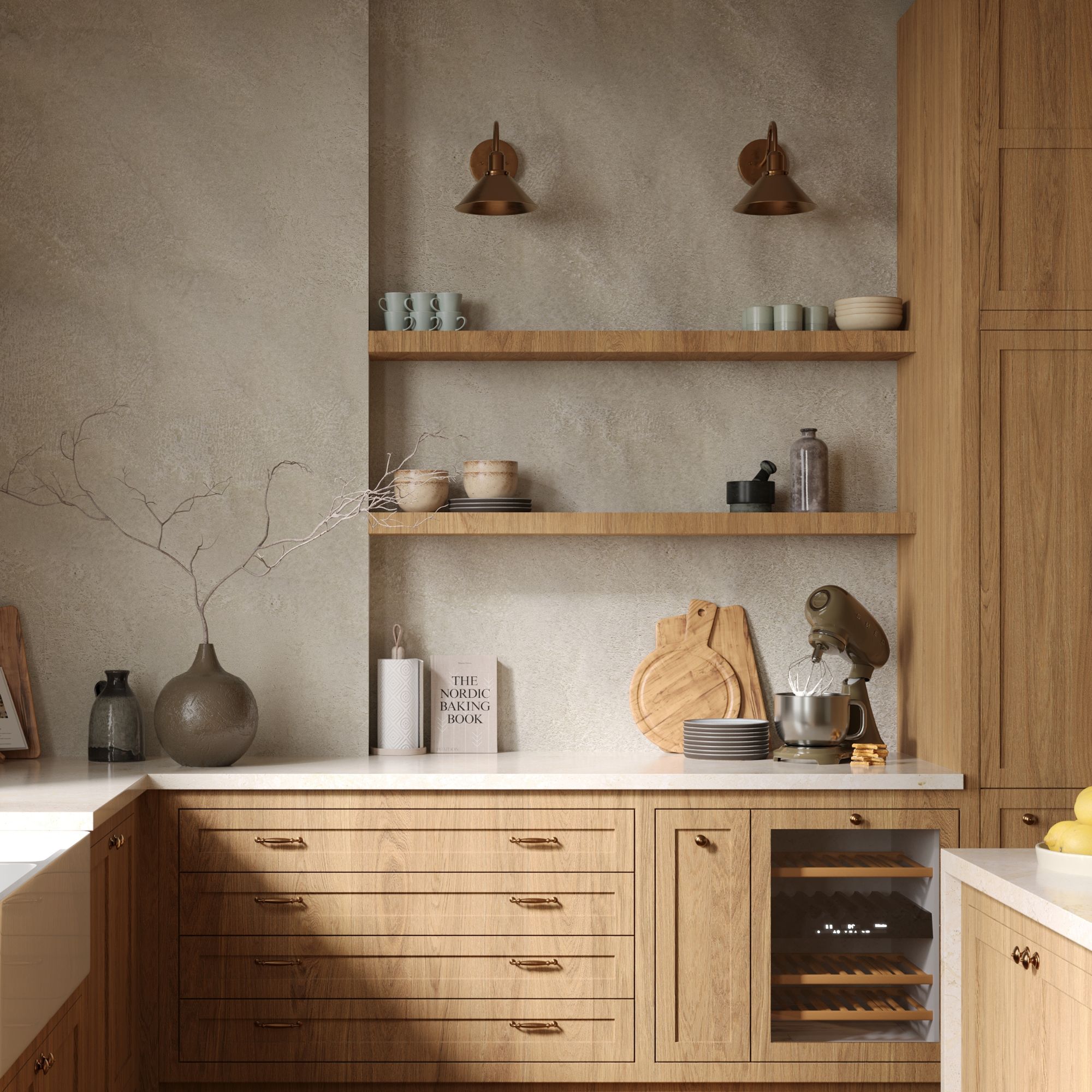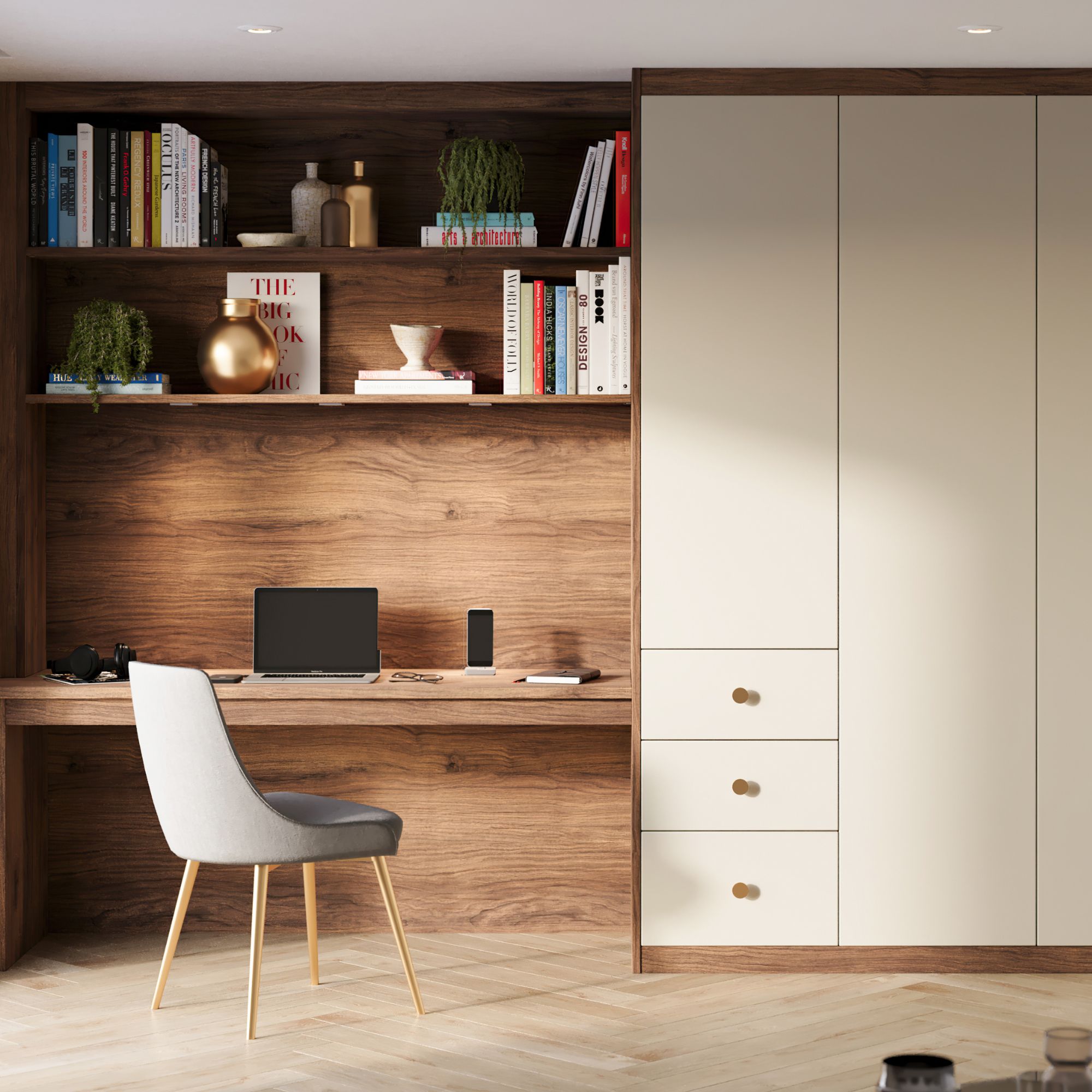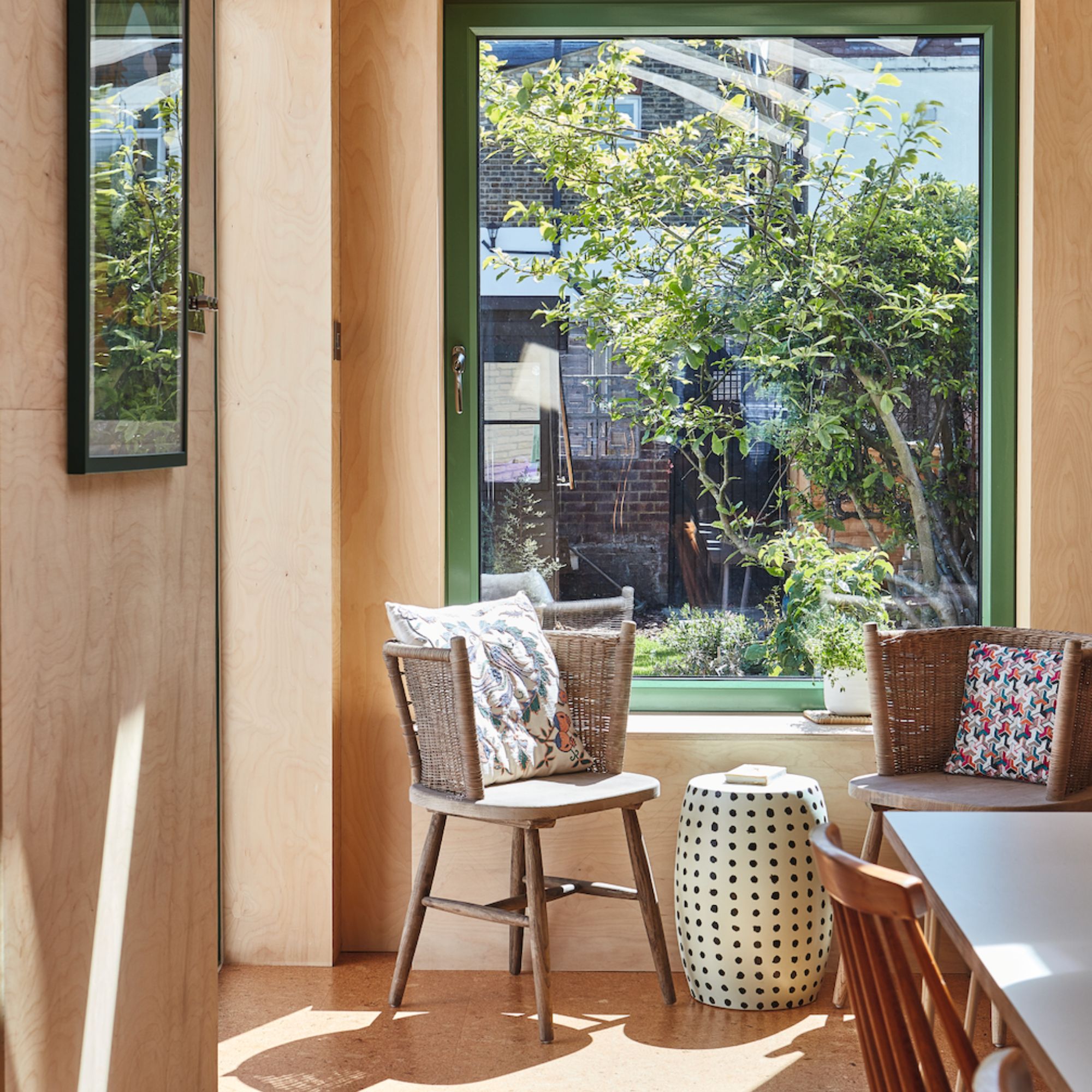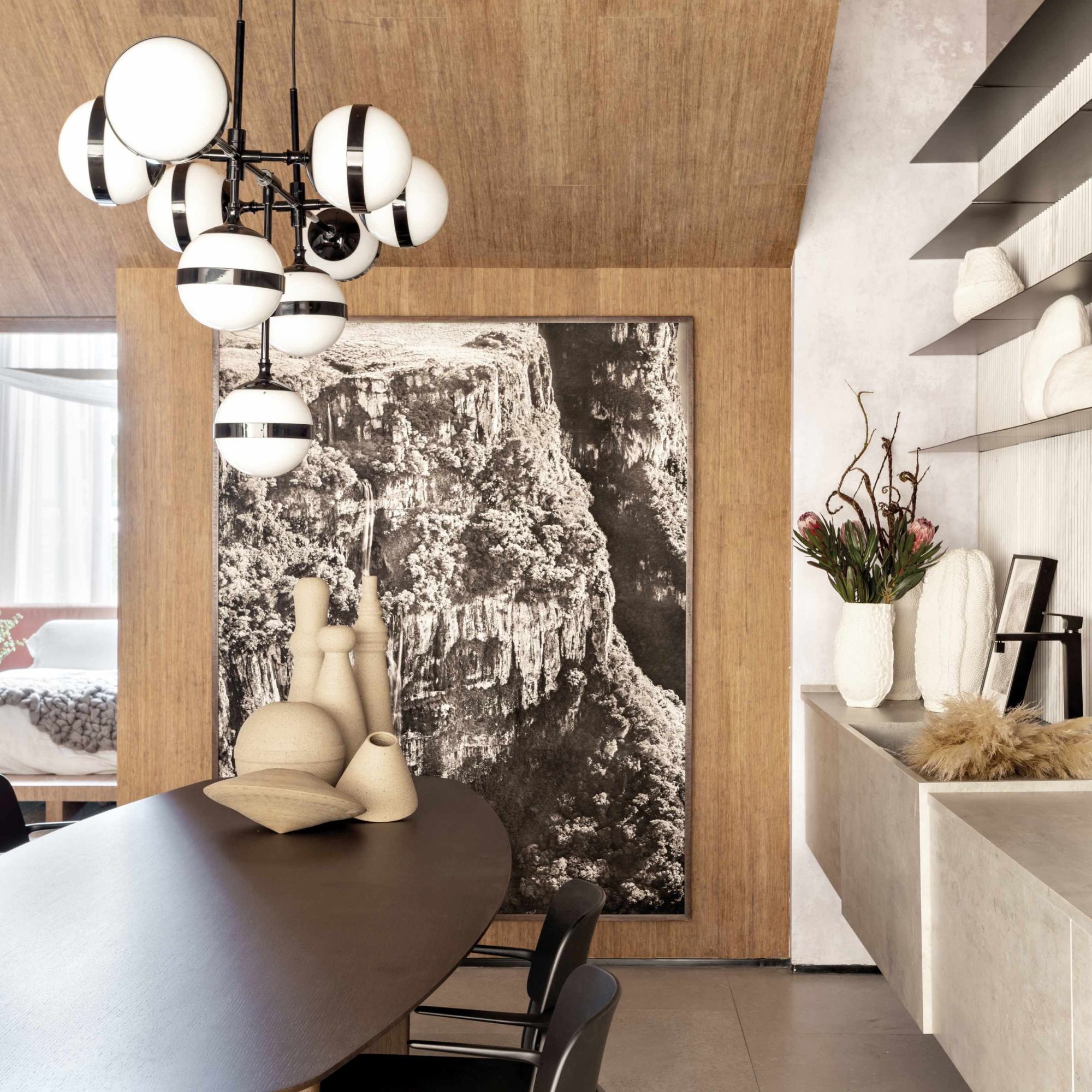
If you don’t know by now, ‘drenching’ is the hot new way to style your home. As the name suggests, the concept of drenching involves covering every surface in the same colour, pattern or material. It’s an all-encompassing look that is continuously evolving, and it’s definitely a firm favourite of ours when it comes to the latest home decor trends.
So far in 2025, we’ve seen it all when it comes to drenching. From the tried and tested colour drenching approach to the more maximalist takes on the trend, like pattern drenching and tile drenching, there seems to be a way to make this look work for everyone. And the latest spin on the trend offers a more pared-back approach. Introducing wood drenching.
‘Wood drenching, like colour drenching, sees wood used as the main material across walls, ceilings, floors and furniture to create a really cohesive and impactful look,’ explains Emma Deterding, founder and creative director at Kelling Designs.
‘Highlighting the organic beauty of the material, the textures and tones of wood take centre stage when drenched, bringing in a really natural warmth that connects you to the great outdoors.’
If you’re after a calming slant on this typically playful style, wood drenching is perfect for you. Immersing yourself, and your room, in natural materials is sure to create a grounded and peaceful feel.
‘Wood drenching evokes a warm ambience that introduces the beauty of nature indoors. It works particularly well in living rooms and bedrooms, where calm and comforting environments are key,’ confirms Rachal Hutcheson, national retail manager at Sharps.
Just like all the other drenching styles, there are a few golden rules to follow if you really want to nail the look. This is all you need to know.
1. Choose the right tone
The key to pulling off the wood drenching trend lies in picking the right kind of wood for your space. ‘Light shades like Nordic Oak offer a clean, airy feel, whilst darker options such as walnut add drama and richness without overwhelming the space,’ advises Rachal. ‘And be careful when choosing woods that have orange or red undertones, they can often date a room or dominate the space if not used thoughtfully.’

If you’re working with a small space, a light palette is ideal for emulating a bright and open atmosphere, while darker finishes work best to bring a cosy feel into a slightly bigger space.
To really elevate the look, try a tonal approach. ‘You can still use different wood materials and finishes on different surfaces to create a variation in texture,’ suggests Jane Rockett, co-founder of Rockett St George, ‘but keeping a similar warm, light or dark drench brings a sense of intention to the space.’
2. Embrace earthy accents
Wood drenching effectively brings the outdoors in to create a relaxed and comforting environment. Lean into this by using an earthy palette alongside the wood.
‘Bring the look together with earthy, nature-inspired accents,’ suggests Rachal. ‘Think soft greens, muted rusts, and plenty of tactile layers like plush throws, textured cushions, and upholstered furniture to add softness and balance.’

Adding an earthy feel is a great way to elevate the natural warmth that wood brings into a space. Emma agrees, and suggests using this approach in the kitchen for an effortless finish.
‘In kitchens, you can highlight the organic beauty by choosing wood cabinetry paired with accent walls to add an earthy, grounded feel - just be sure to treat the wood to prevent damage from humidity,’ she advises.
3. Smart furniture styling
To effectively nail the wood-drenched look, it’s important not to overwhelm the space. So, be clever about how you style your wooden elements. ‘Built-in wooden furniture is a smart way to integrate the material without overcrowding the space,’ says Rachal.

‘Not only does this create a cohesive look but it also helps to utilise vertical space, offering storage while visually elongating a room,’ she adds. ‘This creates a sense of openness and luxury, allowing the eye to travel upward and appreciate the architectural flow of the space.’
Or, if you’d rather incorporate different kinds of furniture finishes, be sure to stick to a minimal palette; this will allow the room's wooden accents to shine.
4. Contrast is key
While this trend revolves around the use of wooden accents, it’s important to provide some visual breaks in the space too.
‘Introducing rich, contrasting textures prevents your home from feeling like an old cabin in the wilderness,’ says Jane. ‘Curved marble, glass, matt or chrome metals and textured fabrics all look gorgeous against large expanses of wood and provide a beautiful sense of balance.’

While contrasting materials are effective and allow the eye to rest, plants and greenery are also a great way to add some freshness to your scheme too, giving the look a different feel.
‘Be sure to avoid using too many wood tones or finishes as they can overwhelm the space, making the room feel heavy and cramped,’ says Emma. ‘Visual breaks are important to add depth and avoid the room feeling flat.’
Get the look
With this expert advice, wood drenching has never been easier. Will you be trying it in your home?







